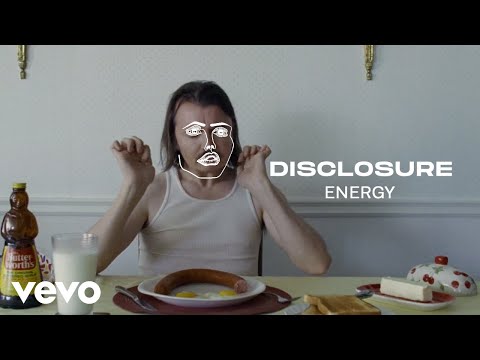
Science fiction has always been an interesting genre. For something that – by its very name – is at least half rooted in realism, it’s spent the last century pushing every conceivable boundary of science. What if we had robot pals? Reckon there’s any aliens knocking about in space? Think we’ll start living on other planets?
Those are questions that, decades later, we still don’t have really have any answers for. We might have made the questionable decision to start handing out dangerous robo-dogs to police departments, and yes ludicrously rich billionaires might be firing themselves into space, but we’re still not quite clinking martinis under glass domes on Mars.
That being said, real-world science has come far enough that we’re able to ask more specific questions about how life in space would pan out. For Mi-Clos Studio, the creator of Out There: Oceans Of Time, our growing knowledge of the cosmos means there’s a lot more room for the most fantastical sci-fi games to ground themselves in reality.

“I’m a very big fan of astrophysics – I really got into it for a number of years. Everything in the game is like that – we’re trying to be realistic,” says Michael Peiffert, CEO and creative director at Mi-Clos, before pointing to black holes in Oceans Of Time as an example of the studio’s approach to realism.
“We have tried to be as realistic as possible – how the light bends when it gets through the black hole and stuff like that. For the tech artists that was a delight to create because it’s really scientific.”
Game designer Iris Caulliez proudly adds that even though our own solar system makes an appearance in Oceans Of Time, realism means our home doesn’t quite look how we left it.
“The sun has collapsed – so it’s not as we know it today, we actually did a lot of scientific research to know how scientists envision this situation and actually we have quite a realistic representation because our solar system. Basically, the sun absorbed all the planets between the sun and Earth, so Earth is still here, but the planets in between are gone, and the gas giants have vanished too because of their temperature change – and this is one of the actual scientific representations of what will happen in this situation.”

“I won’t say that every planet is 100 per cent scientific or accurate, because you will never know, anything can happen in space” cautions Peiffert, but the duo certainly take pride in the endeavours they’ve gone to represent the cosmos accurately.
With the “science” box firmly ticked, Mi-Clos bought plenty of room to get weird in the fiction department. This is best demonstrated in Oceans Of Time‘s vast array of alien life – in my own time with the game I ran into extra-terrestrial creatures that were hard to compare to animals on this planet, a far cry from the little green men that usually dot the genre.
“In most video games when you meet aliens, most of the time they are humanoid-like, they look like humans, they have the same proportions, they wear the same armours and stuff. I think it’s a shame because with video games you can really think about anything and you can make it happen,” said Peiffert. “For this game, since the first instalment that released in 2014, I wanted to have non-humanoid creatures and also non-carbonated creatures because we are carbonated, we are made with carbon. In space, maybe there’s some species that are made with rocks, or water, or I don’t know, anything – hair! They do not necessarily have arms and legs, or necessarily walk like us. We wanted the player to really encounter really different life forms to make it feel like you’re out there, you’re somewhere else in space.”
“They also have their own way of defining what culture and society is – they don’t abide by our rules. They don’t have genders, or clothes, or that kind of stuff,” adds Caulliez.

Caulliez and Peiffert are both very passionate about the sci-fi world, and Oceans Of Time‘s identity relishes in offering players incomprehensible alien life, gorgeous planets, and realistic representations of the stars. Oceans Of Time feels like it caters to every element of science fiction, and that spectrum owes itself to the mirrored range of influences that Mi-Clos has drawn on.
“We have so much different inspiration,” says Peiffert, who lists Stanley Kubrick’s 2001: A Space Odyssey and Interstellar as a few of the big one, though adds that “visually, we’ve been inspired a lot by vintage sci-fi comic books. They’re very colourful, there’s a very nice vibe with how they represent the characters and aliens.”
For Caulliez, the way Star Trek “handles crew members and the different factions and the way people have a role in space exploration” had a big influence on the dynamic within Oceans Of Time, and all of the topics it touches on can be found within the game.
On the text-based moral dilemmas in Oceans Of Time – many of them bringing up issues with alien factions and crew member relationships – Caulliez reveals that “the narrative in this game is mostly based on the dynamic we can find in Choose Your Own Adventure books. Nothing will go on if you don’t take something – you have to make a choice to go on.”

Chipping in, Peiffert shares that “any decisions you take will lead you somewhere, there’s no dead ends and that’s why the different endings are really different – there’s very different outcomes for the story because give this choice to the player.”
Oceans Of Time, if anything, is an ambitious project. So much so, that Peiffert says Mi-Clos has had to start being more selective over the ideas it puts into the game – laughing, he says that “I wish we could do everything, but at some point we need to finish the game!”
Speaking of finishing the game, Oceans Of Time was recently delayed to give Mi-Clos a bit more time to polish it up. Whilst this can often be a nightmare for studios who have to face angry fans, Caulliez says their community is “very supportive”. Likewise, Peiffert says “we have the luxury of having a publisher that is very supportive, and a community as well,” and clarifies that they “don’t do crunch at all”. For Peiffert, who made that decision for his company at the very beginning, he explains that there’s a good reason for it:
“I would say that when I started the company, it was by myself. I was working with a lot of independents and freelancers, and I was crunching all the time. The first years were tough. Before getting my first employee I got a big burnout that took me a few years to recover from. So as soon as I got my first employee, I said look – there won’t be any crunch anymore in the company. That’s why I think it’s bad – I really experienced it in a very hardcore way, and I don’t want it for my team.”
“Our publisher is really supportive of this, we don’t have to crunch to get the game out, and I think this will reflect on the game that people didn’t suffer during the production.”
Out There: Oceans Of Time launches (pun intended) for PC on April 7, 2022.
The post ‘Out There: Oceans Of Time’ developers talk juggling realism with creativity appeared first on NME.






